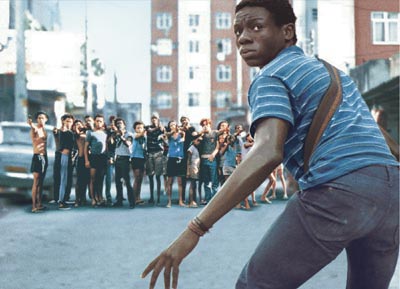BT, Setanta, Top Up TV and Virgin Media - Ofcom Pay-TV consultation response
Useful Secondary Wider Reading:
http://www.marketingmagazine.co.uk/news/838529/Setanta-gives-advertisers-choice-Sky-share-live-football-rights

How important is it to consider genre influences in reaching an understanding of City of God? Refer to specific sequences in your answer.
World Cinema films are often described as ‘alternative’, using distinctive cinematic techniques. How far is your close study film ‘alternative’?
How has wider research led you to a greater understanding of the time and place in which your Close Study film was set?
What aspects of mise-en-scène do you feel most effectively create meaning in your Close Study film? Refer to specific sequences in your answer.
How has research into the social and/or cultural context of your Close Study film influenced your understanding of it?
How important is the narrative structure of City of God in developing characters in the film?
To what extent do you think your chosen film challenges audiences’ preconceptions about particular social groups?
What do you consider to be the most distinctive visual features of your chosen film?
To what extent do you think an understanding of the director’s other work would allow the viewer a greater understanding of your chosen film?
Have the critical reviews you have read about your chosen film confirmed or challenged your own reading of the film?
Do you think it is necessary to locate your chosen film within its social and political context in order to appreciate it fully?
How important is gender in the critical analysis of films? Refer in detail to your own studies.
Is it too simple to say that some films target male audiences and others target female audiences?
Explore the benefits of applying a gendered critical approach to studying film with reference to specific case studies.

 Now that we have seen City of God, we must begin to explore the film as a commercial and artistic entity, exploring its representations and cultural significance within Brazil and the West. Here are some goodies to help you on your journey of discovery:
Now that we have seen City of God, we must begin to explore the film as a commercial and artistic entity, exploring its representations and cultural significance within Brazil and the West. Here are some goodies to help you on your journey of discovery:

As audiences become acquainted with particular genres, they come to expect a specific type of viewing experience from films of that genre.
Genres typically have a life cycle, progressing from uncertain beginnings to stable maturity and parodic decline.
Though generic similarities between films have existed since the beginning of cinema, it was the advent of semiotics and structuralism that gave scholars a sophisticated methodology with which to analyze film genre (see Film Theory).
Jim Kitses defined genre in terms of structuring oppositions, such as the wilderness-civilization binary found in westerns.
Rick Altman divided genre into the semantic (iconographic elements such as the cowboy hat) and thesyntactic (structural and symbolic meanings).
Uploaded on authorSTREAM by hurtwoodhousemedia
YEAR 13 FILM: PLEASE WATCH 'CITY OF GOD' - IT IS ESSENTIAL THAT YOU WATCH THIS FILM THIS WEEK PLEASE! ENJOY. X
Section B: Institutions and Audiences
Answer the question below, making detailed reference to examples from your case study
material to support points made in your answer.
2 Discuss the issues raised by an institution’s need to target specific audiences within a media
industry which you have studied.
[50]





